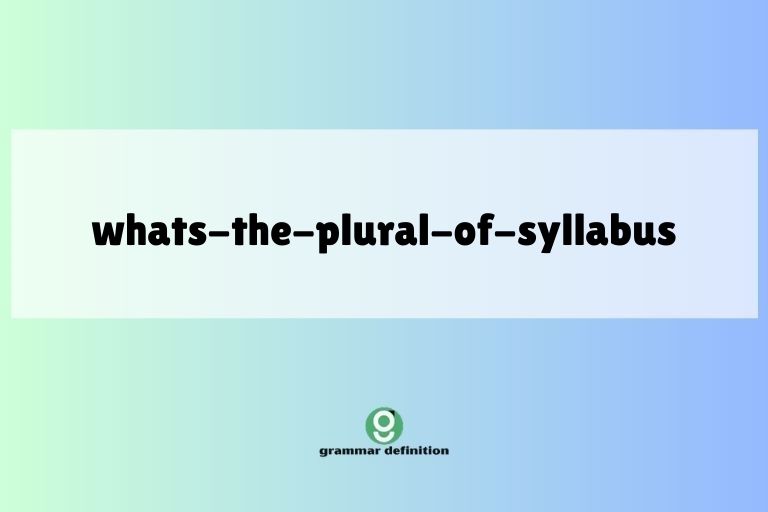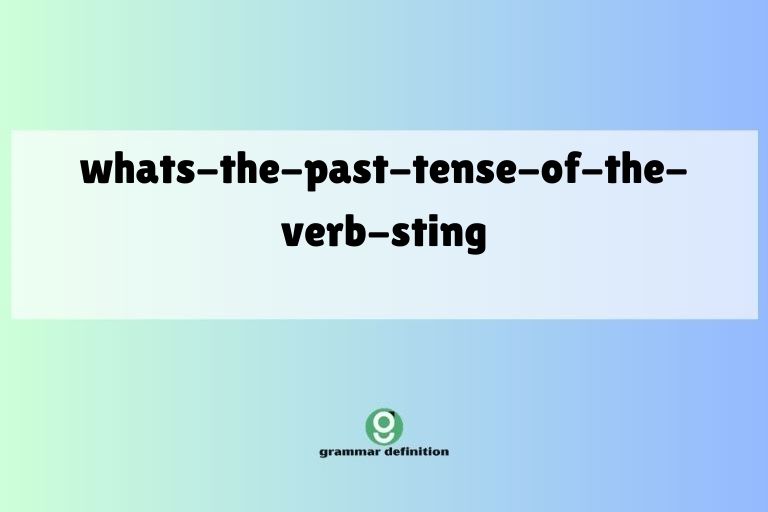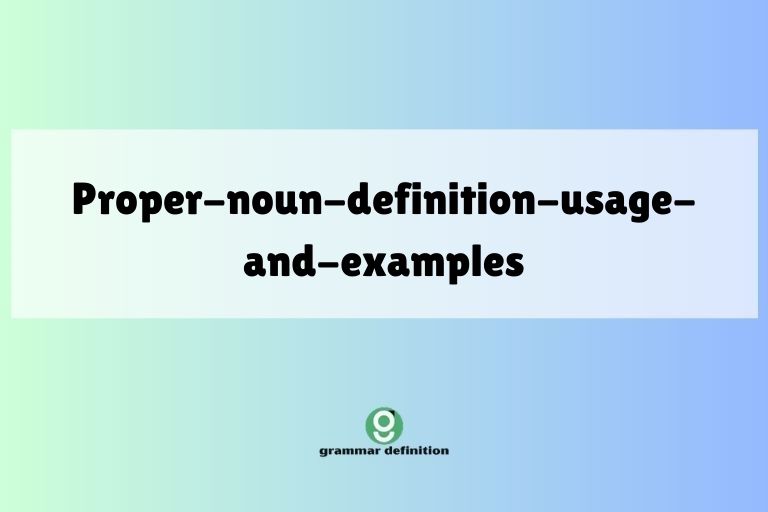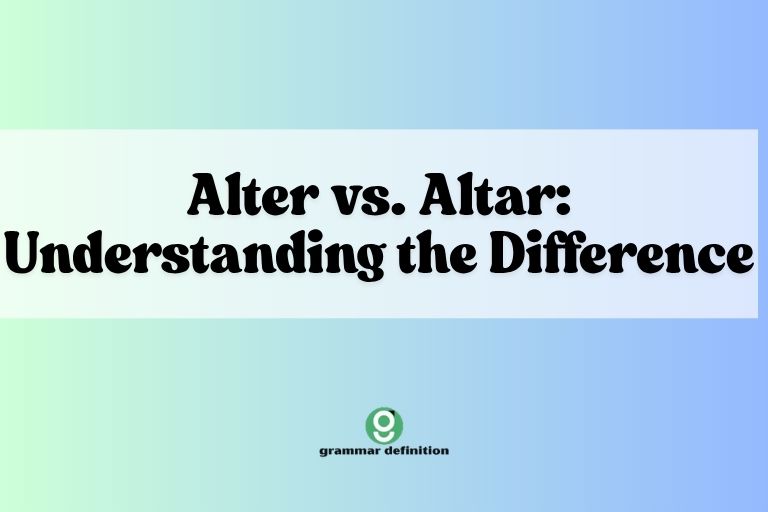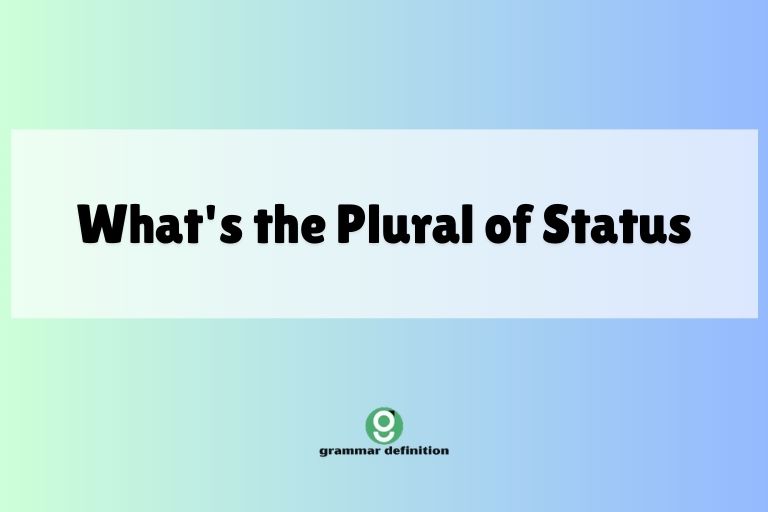Unraveling the Past Tense of “Spread”: A Comprehensive Guide
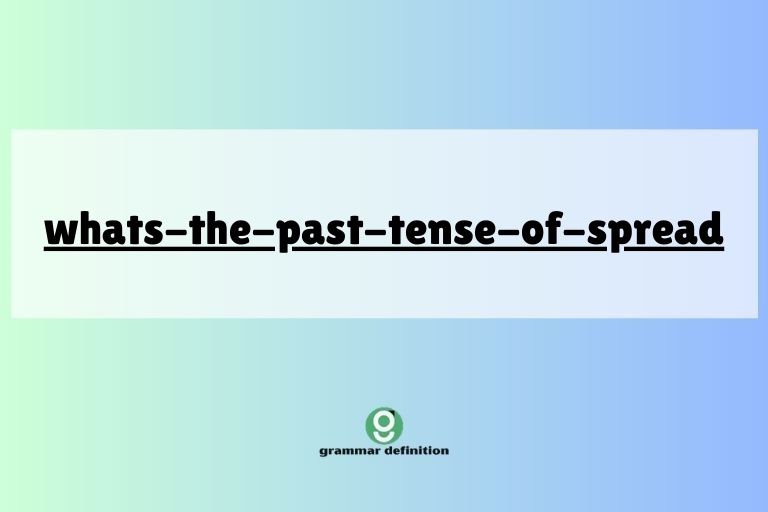
Understanding verb tenses is crucial for effective communication in English. One verb that often causes confusion is “spread.” While it might seem simple, grasping its past tense and past participle forms is essential for accurate and fluent writing and speaking.
This article provides a comprehensive guide to the past tense of “spread,” exploring its definition, structure, usage, and common pitfalls. Whether you’re an English language learner or a native speaker looking to refine your grammar skills, this guide will equip you with the knowledge and confidence to use “spread” correctly in all its forms.
This article is designed to benefit English language learners, students, writers, and anyone who wants to improve their grasp of English grammar. We will cover everything from the basic definition of “spread” to advanced usage scenarios, ensuring a thorough understanding of this versatile verb.
Table of Contents
- Introduction
- Definition of “Spread”
- Structural Breakdown
- Types and Categories of “Spread” Usage
- Examples of “Spread” in Different Tenses
- Usage Rules for “Spread”
- Common Mistakes with “Spread”
- Practice Exercises
- Advanced Topics
- Frequently Asked Questions (FAQ)
- Conclusion
Definition of “Spread”
The verb “spread” is a versatile word with multiple meanings. Generally, it refers to the action of extending something over an area, distributing it, or making it known.
It can be used both transitively (with a direct object) and intransitively (without a direct object). Understanding its various meanings is key to using it correctly in different contexts.
Classification: Irregular Verb (though it doesn’t change form across tenses)
Function: Can function as an action verb (describing an action) or a linking verb (connecting a subject to a description).
Contexts: “Spread” can be used in a wide variety of contexts, including physical actions (like spreading butter), informational contexts (like spreading news), and abstract concepts (like spreading influence).
Structural Breakdown
The verb “spread” is somewhat unique in that its base form, past tense, and past participle are all the same. This means:
- Base Form: spread (used in the present tense, infinitive form, and imperative form)
- Past Tense: spread (used to describe actions completed in the past)
- Past Participle: spread (used in perfect tenses and passive voice constructions)
The unchanging form across tenses can be confusing for learners. The key to understanding its use lies in the context of the sentence and the presence of auxiliary verbs (like “have,” “had,” “is,” “was,” etc.) that indicate the tense.
For example:
- Present Tense: I spread the peanut butter on the bread.
- Past Tense: Yesterday, I spread the peanut butter on the bread.
- Past Participle (Perfect Tense): I have spread the peanut butter on the bread many times.
- Past Participle (Passive Voice): The rumor was spread quickly through the town.
Types and Categories of “Spread” Usage
The verb “spread” can be categorized based on its meaning and how it’s used in a sentence. Here are some common categories:
1. Physical Spreading
This refers to the literal action of distributing something over a surface.
2. Dissemination of Information
This involves the act of making information, news, or rumors known to a wider audience.
3. Extension or Expansion
This refers to the widening or lengthening of something, either physically or metaphorically.
4. Distribution
This involves scattering or allocating something over an area or among a group.
5. Figurative Spreading
This encompasses metaphorical uses, such as spreading joy or spreading influence.
Examples of “Spread” in Different Tenses
To fully grasp the usage of “spread,” let’s examine examples across different tenses and categories. Remember, the form of the verb itself remains constant; the context and auxiliary verbs determine the tense.
Table 1: Examples of “Spread” in Simple Tenses
The following table illustrates the use of “spread” in the simple present, simple past, and simple future tenses. Notice how the context clues indicate the correct tense.
| Tense | Example Sentence | Explanation |
|---|---|---|
| Simple Present | Every morning, I spread jam on my toast. | Describes a habitual action. |
| Simple Present | The company spreads its influence globally. | Describes a general truth or ongoing action. |
| Simple Present | He spreads the cards on the table before the game. | Describes an action happening now. |
| Simple Past | Yesterday, she spread the blanket on the grass. | Describes a completed action in the past. |
| Simple Past | The news spread like wildfire through the town. | Describes how the news traveled quickly. |
| Simple Past | They spread the paint evenly across the canvas. | Describes a completed action in the past |
| Simple Future | Tomorrow, I will spread fertilizer in the garden. | Describes an action that will happen in the future. |
| Simple Future | The organization will spread awareness about the issue. | Describes a future action. |
| Simple Future | We will spread the word about the event. | Describes a future action |
| Simple Present | The chef spreads the sauce carefully on the pizza. | Describes a habitual action. |
| Simple Present | The artist spreads the paint on the canvas. | Describes a general truth or ongoing action. |
| Simple Present | He spreads the documents on the desk. | Describes an action happening now. |
| Simple Past | Last week, she spread the seeds in the garden. | Describes a completed action in the past. |
| Simple Past | The rumor spread quickly among the students. | Describes how the news traveled quickly. |
| Simple Past | They spread the map on the table to plan their route. | Describes a completed action in the past |
| Simple Future | Next year, I will spread my wings and travel the world. | Describes an action that will happen in the future. |
| Simple Future | The campaign will spread its message across the country. | Describes a future action. |
| Simple Future | We will spread joy to everyone we meet. | Describes a future action |
| Simple Present | The sun spreads its warmth across the land. | Describes a habitual action. |
| Simple Present | The company spreads its products worldwide. | Describes a general truth or ongoing action. |
| Simple Present | He spreads his arms wide to welcome her. | Describes an action happening now. |
| Simple Past | In the past, she spread her knowledge to others. | Describes a completed action in the past. |
| Simple Past | The fire spread rapidly through the forest. | Describes how the news traveled quickly. |
| Simple Past | They spread the word about the charity event. | Describes a completed action in the past |
Table 2: Examples of “Spread” in Perfect Tenses
Perfect tenses use auxiliary verbs like “have,” “has,” or “had” along with the past participle (which is also “spread”).
| Tense | Example Sentence | Explanation |
|---|---|---|
| Present Perfect | I have spread the word about the meeting. | Action completed at an unspecified time in the past. |
| Present Perfect | She has spread her influence throughout the industry. | Action completed with relevance to the present. |
| Present Perfect | They have spread the news about their engagement. | Action completed recently. |
| Past Perfect | By the time I arrived, they had spread the picnic blanket. | Action completed before another point in the past. |
| Past Perfect | Before the storm hit, the farmers had spread the hay to dry. | Action completed before another past action. |
| Past Perfect | She had spread the rumors before I could stop her. | Action completed before another point in the past. |
| Future Perfect | By next year, I will have spread my knowledge to hundreds of students. | Action will be completed before a specific time in the future. |
| Future Perfect | By the time the project is finished, they will have spread the technology worldwide. | Action will be completed before a future time. |
| Future Perfect | By the end of the day, we will have spread the mulch in the garden. | Action will be completed before a specific time in the future. |
| Present Perfect | I have spread my wings and flown to new heights. | Action completed at an unspecified time in the past. |
| Present Perfect | She has spread joy to everyone she meets. | Action completed with relevance to the present. |
| Present Perfect | They have spread awareness about the importance of recycling. | Action completed recently. |
| Past Perfect | By the time I woke up, they had spread the breakfast feast on the table. | Action completed before another point in the past. |
| Past Perfect | Before the guests arrived, the hosts had spread the decorations around the room. | Action completed before another past action. |
| Past Perfect | She had spread the gossip before anyone could verify the truth. | Action completed before another point in the past. |
| Future Perfect | By the time I retire, I will have spread my influence throughout the company. | Action will be completed before a specific time in the future. |
| Future Perfect | By the time the conference begins, they will have spread the information to all attendees. | Action will be completed before a future time. |
| Future Perfect | By the end of the week, we will have spread the good news to all our friends and family. | Action will be completed before a specific time in the future. |
| Present Perfect | I have spread the seeds of kindness wherever I go. | Action completed at an unspecified time in the past. |
| Present Perfect | She has spread her talents across multiple fields. | Action completed with relevance to the present. |
| Present Perfect | They have spread their resources to help those in need. | Action completed recently. |
| Past Perfect | By the time I finished the project, they had spread the results to the team. | Action completed before another point in the past. |
| Past Perfect | Before the meeting started, the presenter had spread the handouts on the table. | Action completed before another past action. |
| Past Perfect | She had spread the photos out on the table before showing them to her friends. | Action completed before another point in the past. |
Table 3: Examples of “Spread” in Continuous Tenses
Continuous tenses describe actions that are ongoing. They use auxiliary verbs like “is,” “was,” “are,” “were,” “being,” or “been” along with the present participle (spreading).
| Tense | Example Sentence | Explanation |
|---|---|---|
| Present Continuous | I am spreading butter on my bread right now. | Action happening at the moment of speaking. |
| Present Continuous | The company is spreading its operations into new markets. | Action in progress. |
| Present Continuous | He is spreading the word about the upcoming event. | Action happening now. |
| Past Continuous | She was spreading the tablecloth when the guests arrived. | Action in progress at a specific time in the past. |
| Past Continuous | The fire was spreading rapidly through the building. | Action ongoing in the past. |
| Past Continuous | They were spreading rumors about him before he could defend himself. | Action in progress at a specific time in the past. |
| Future Continuous | Tomorrow, I will be spreading mulch in the garden all day. | Action will be in progress at a specific time in the future. |
| Future Continuous | The organization will be spreading awareness throughout the community next month. | Action will be in progress in the future. |
| Future Continuous | We will be spreading holiday cheer during the festive season. | Action will be in progress in the future. |
| Present Continuous | I am spreading the good vibes around the office. | Action happening at the moment of speaking. |
| Present Continuous | The news is spreading quickly across social media. | Action in progress. |
| Present Continuous | He is spreading joy to everyone he meets. | Action happening now. |
| Past Continuous | She was spreading the seeds in the garden when it started to rain. | Action in progress at a specific time in the past. |
| Past Continuous | The scent of flowers was spreading throughout the room. | Action ongoing in the past. |
| Past Continuous | They were spreading gossip about her behind her back. | Action in progress at a specific time in the past. |
| Future Continuous | Tomorrow, I will be spreading my wings and traveling to new destinations. | Action will be in progress at a specific time in the future. |
| Future Continuous | The campaign will be spreading its message throughout the nation next year. | Action will be in progress in the future. |
| Future Continuous | We will be spreading the word about our upcoming event. | Action will be in progress in the future. |
| Present Continuous | I am spreading positivity wherever I go. | Action happening at the moment of speaking. |
| Present Continuous | The company is spreading its influence in the global market. | Action in progress. |
| Present Continuous | He is spreading his arms wide to embrace his friend. | Action happening now. |
| Past Continuous | She was spreading her knowledge to the students in the classroom. | Action in progress at a specific time in the past. |
| Past Continuous | The aroma of freshly baked bread was spreading throughout the house. | Action ongoing in the past. |
| Past Continuous | They were spreading rumors about the new employee before getting to know him. | Action in progress at a specific time in the past. |
Usage Rules for “Spread”
While the form of “spread” remains constant, its usage is governed by the standard rules of English verb tenses. Here are some key rules to remember:
- Subject-Verb Agreement: In the present tense, ensure the verb agrees with the subject. For example, “He spreads” (singular) vs. “They spread” (plural).
- Auxiliary Verbs: Use appropriate auxiliary verbs to indicate the correct tense (e.g., “has spread” for present perfect, “was spreading” for past continuous).
- Context is Key: Pay attention to the context of the sentence to determine the correct tense. Time adverbs (e.g., “yesterday,” “tomorrow,” “now”) can provide valuable clues.
- Active vs. Passive Voice: “Spread” can be used in both active and passive voice. In the passive voice, use “be” + “spread” (e.g., “The rumor was spread”).
Common Mistakes with “Spread”
One of the most common mistakes is incorrectly assuming that “spread” is a regular verb and adding “-ed” to form the past tense or past participle. For example:
| Incorrect | Correct | Explanation |
|---|---|---|
| I spreaded the butter. | I spread the butter. | “Spread” is an irregular verb with the same form in all tenses. |
| The news was spreaded. | The news was spread. | The past participle of “spread” is “spread,” not “spreaded.” |
Another common mistake is using the wrong auxiliary verb, leading to incorrect tense formation. For example:
| Incorrect | Correct | Explanation |
|---|---|---|
| I am spread the news yesterday. | I spread the news yesterday. | The simple past tense is needed here, not the present continuous. |
| I have spreading the word. | I have spread the word. | The past participle “spread” should be used with “have.” |
Practice Exercises
Test your understanding of “spread” with these practice exercises. Fill in the blanks with the correct form of the verb “spread.”
Exercise 1: Simple Tenses
- Every morning, I _______ (spread) jam on my toast.
- Yesterday, she _______ (spread) the blanket on the grass.
- Tomorrow, I will _______ (spread) fertilizer in the garden.
- The company _______ (spread) its influence globally.
- The news _______ (spread) like wildfire through the town.
- They _______ (spread) the paint evenly across the canvas.
- The organization will _______ (spread) awareness about the issue.
- We _______ (spread) the word about the event.
- The chef _______ (spread) the sauce carefully on the pizza.
- He _______ (spread) the documents on the desk.
Answer Key: 1. spread, 2. spread, 3. spread, 4. spreads, 5. spread, 6. spread, 7. spread, 8. spread, 9. spreads, 10. spreads
Exercise 2: Perfect Tenses
- I _______ (have, spread) the word about the meeting.
- She _______ (has, spread) her influence throughout the industry.
- They _______ (have, spread) the news about their engagement.
- By the time I arrived, they _______ (had, spread) the picnic blanket.
- Before the storm hit, the farmers _______ (had, spread) the hay to dry.
- She _______ (has, spread) joy to everyone she meets.
- They _______ (have, spread) awareness about the importance of recycling.
- By the time I woke up, they _______ (had, spread) the breakfast feast on the table.
- Before the guests arrived, the hosts _______ (had, spread) the decorations around the room.
- By the time I retire, I _______ (will have, spread) my influence throughout the company.
Answer Key: 1. have spread, 2. has spread, 3. have spread, 4. had spread, 5. had spread, 6. has spread, 7. have spread, 8. had spread, 9. had spread, 10. will have spread
Exercise 3: Continuous Tenses
- I _______ (am, spread) butter on my bread right now.
- The company _______ (is, spread) its operations into new markets.
- He _______ (is, spread) the word about the upcoming event.
- She _______ (was, spread) the tablecloth when the guests arrived.
- The fire _______ (was, spread) rapidly through the building.
- Tomorrow, I _______ (will be, spread) mulch in the garden all day.
- The organization _______ (will be, spread) awareness throughout the community next month.
- We _______ (will be, spread) holiday cheer during the festive season.
- The news _______ (is, spread) quickly across social media.
- She _______ (was, spread) the seeds in the garden when it started to rain.
Answer Key: 1. am spreading, 2. is spreading, 3. is spreading, 4. was spreading, 5. was spreading, 6. will be spreading, 7. will be spreading, 8. will be spreading, 9. is spreading, 10. was spreading
Advanced Topics
For advanced learners, understanding the nuances of “spread” in more complex grammatical structures is crucial.
1. “Spread” in Reduced Relative Clauses
“Spread” can appear in reduced relative clauses, adding conciseness to writing. For example:
- Original: The rumors that were spread by him caused a lot of trouble.
- Reduced: The rumors spread by him caused a lot of trouble.
2. “Spread” in Idiomatic Expressions
“Spread” is part of several idiomatic expressions, which have meanings beyond the literal definition of the word. Some examples include:
- Spread one’s wings: To venture out and try new things.
- Spread the word: To disseminate information or news.
- Spread oneself too thin: To try to do too many things at once, resulting in inefficiency.
3. “Spread” in Formal Writing
In formal writing, it’s important to ensure that the use of “spread” is precise and avoids ambiguity. Clear context and proper tense usage are essential.
Frequently Asked Questions (FAQ)
- Q: Is “spread” a regular or irregular verb?
A: “Spread” is an irregular verb. However, it’s a unique case because its base form, past tense, and past participle are all the same: “spread.” This means it doesn’t follow the typical pattern of adding “-ed” to form the past tense.
- Q: How do I know which tense “spread” is in a sentence?
A: The tense of “spread” is determined by the context of the sentence and the presence of auxiliary verbs. Look for time adverbs (e.g., “yesterday,” “today,” “tomorrow”) and auxiliary verbs (e.g., “have,” “has,” “had,” “is,” “was”) to identify the correct tense.
- Q: Can “spread” be used in the passive voice?
A: Yes, “spread” can be used in the passive voice. In the passive voice, it’s typically used with a form of the verb “to be” (e.g., “is,” “was,” “were”) followed by “spread.” For example, “The rumor was spread quickly.”
- Q: What are some common mistakes to avoid when using “spread”?
A: The most common mistake is adding “-ed” to form the past tense or past participle (e.g., “spreaded”). Remember that the correct form is always “spread.” Another mistake is using the wrong auxiliary verb, leading to incorrect tense formation.
- Q: How can I improve my understanding of “spread” in different contexts?
A: The best way to improve your understanding is through practice. Read widely and pay attention to how “spread” is used in different contexts. Complete grammar exercises and quizzes to test your knowledge. Consider writing your own sentences using “spread” in various tenses and contexts.
- Q: Is there a difference between “spread” and “distributed”?
A: While “spread” and “distributed” can sometimes be used interchangeably, they have slightly different nuances. “Spread” often implies a more even or less structured distribution over an area, while “distributed” can suggest a more organized or targeted allocation. For example, you might “spread” butter on bread, but you would “distribute” flyers to a specific group of people.
- Q: Can “spread” be used metaphorically?
A: Yes, “spread” is often used metaphorically to describe the dissemination of non-physical things, such as news, rumors, or influence. For example, “The news spread like wildfire” or “She spread her influence throughout the company.”
- Q: Are there any regional variations in the usage of “spread”?
A: No, there are no significant regional variations in the usage of “spread.” Its form and general meaning remain consistent across different dialects of English.
Conclusion
Mastering the verb “spread” is a key step in achieving fluency and accuracy in English. While its unchanging form across tenses might initially seem confusing, understanding the context and the role of auxiliary verbs allows for correct and confident usage.
By studying the examples, practicing the exercises, and avoiding common mistakes, you can effectively incorporate “spread” into your vocabulary and writing.
Remember, consistent practice and attention to detail are essential for mastering any grammar concept. Keep exploring different contexts and examples of “spread” in use, and don’t hesitate to consult grammar resources when needed.
With dedication and effort, you can confidently use “spread” in all its forms and meanings.

